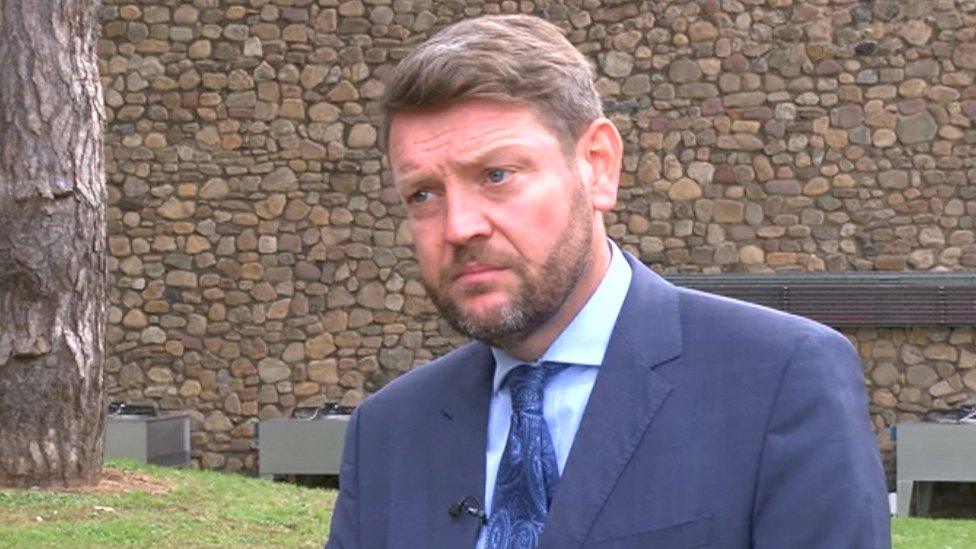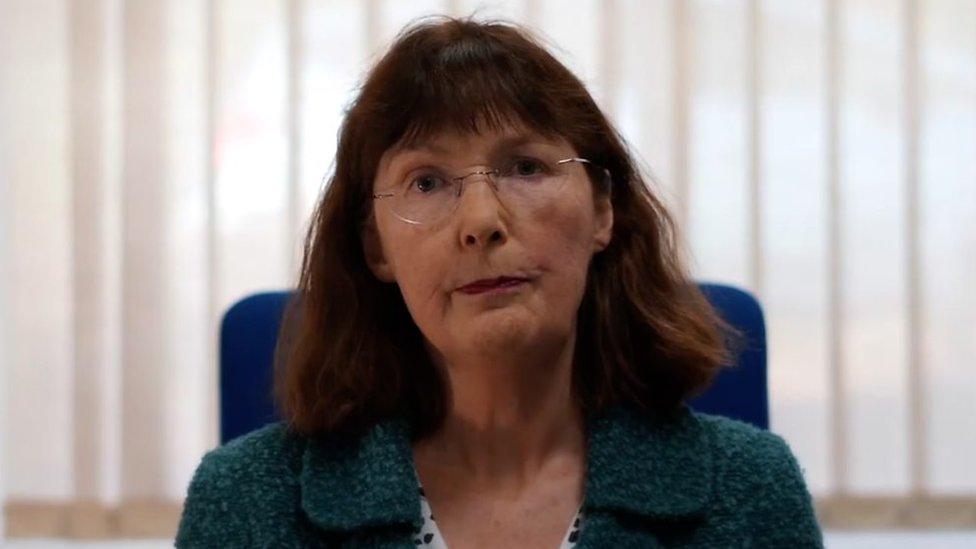Coronavirus: Health board 'could not test suspected Covid patients'
- Published

Newport's Royal Gwent Hospital was at the centre of Wales' Covid-19 outbreak
Hospital patients in one of the worst hit areas for Covid-19 at the start of the pandemic could not be tested for coronavirus, it has been claimed.
Dr Sarah Aitken, interim medical director at Aneurin Bevan University Health Board, said until 9 March only symptomatic patients who had been to a Covid-19-hit country were tested.
She said the virus was "established" in Gwent by the first week of March.
The board said there was a "rapid" rise in coronavirus cases in early March.
In a submission to the Senedd, it also said it was "not authorised" to test suspected Covid-19 patients unless they had been to certain countries.
The health board covers Blaenau Gwent, Caerphilly, Monmouthshire, Newport, Torfaen and southern Powys, which quickly became one of the pandemic's hardest hit areas.
Dr Aitken previously warned there was a "cluster" of coronavirus cases following "the same pattern as was seen in Italy".
She told the committee: "Our first patient was admitted to intensive care and tested positive on March 11 and was picked up when the surveillance was broadened to include people who hadn't travelled.
"What has become evident, subsequently, is that the virus had established itself in the community in Gwent by that first week in March."
At the time testing was "only based on a travel history".
"Redeploying our workforce"
At the peak of the outbreak the health board had 49 patients in critical care.
The "normal maximum" is 28, Dr Aitken said.
"The important thing is that we did cope but we coped by redeploying our workforce," she added.
Board chief executive, Judith Paget, said what concerned the board most in future was another coronavirus pandemic combined with the annual flu outbreak.
"The thing that is worrying us the most is the combination of a flu season and a Covid season," she said.

SCHOOLS: When will children be returning?
EXERCISE: What are the guidelines on getting out?
THE R NUMBER: What it means and why it matters
LOOK-UP TOOL: How many cases in your area?
- Published23 July 2019

- Published25 October 2018

- Published25 March 2020
